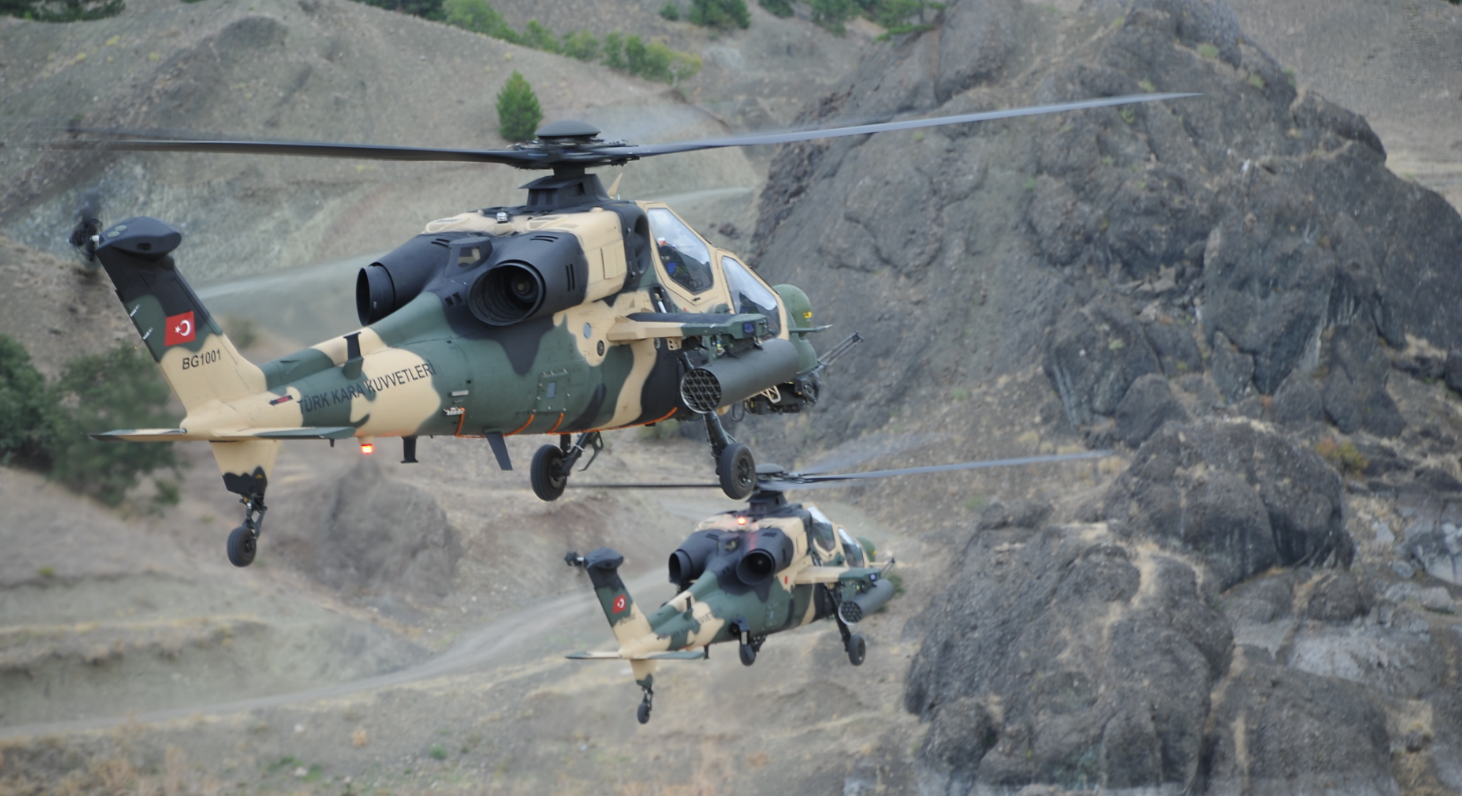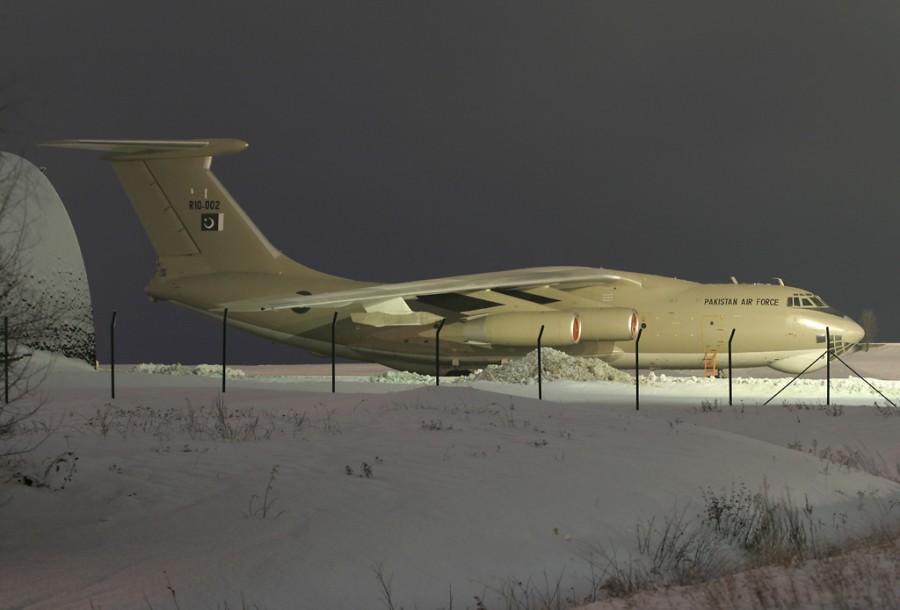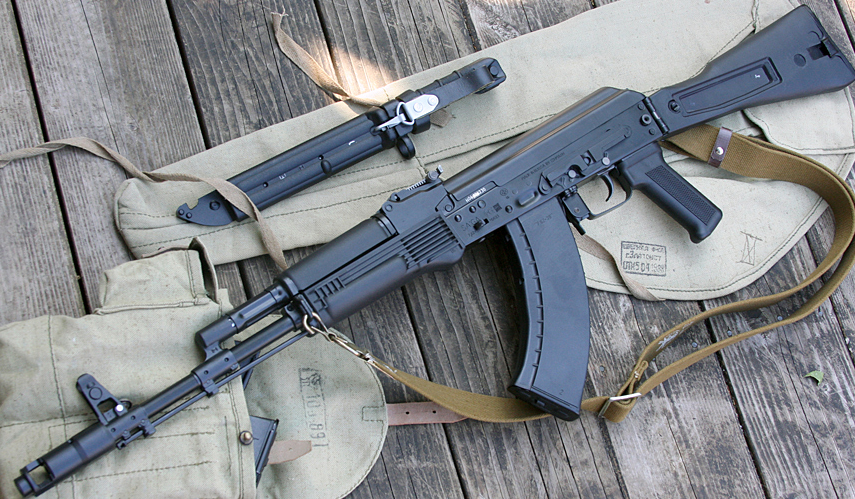2459Views 11Comments

Turkish universities agree to collaborate on turboshaft technology
The Anka University of Technology and Kharkov Technical University have signed an agreement to partner and collaborate on the development of turboshaft engines.
Backed by the Government of Turkey and its general aim to indigenize its defence sourcing as much as possible over the medium and long-term, the collaboration effort will support the national Turboshaft Engine Development Program (TMGP), which is under the purview of TEI – TUSAŞ Engine Industries, Inc.
Notes & Comments:
For the Turkish armed forces and defence industry, the national turboshaft program is a long-term goal, but the interim – especially for the short and medium-term – effort is centered on foreign technology.
A critical aspect of that strategy is the Turkish engine vendor TEI’s partnerships with the Light Helicopter Turbine Engine Company (LHTEC), which itself is a venture between American and British engine manufacturers Honeywell and Rolls-Royce, respectively. The LHTEC CTS800 powers the Turkish Aerospace Industries (TAI) T-129 dedicated attack helicopter, and the very same turboshaft had been selected to power the Turkish Light Utility Helicopter (TLUH) platform.
That said, TEI has not wasted its dependence on LHTEC. Through its role to serve as the principal local vendor for providing propulsion solutions for the T-129 and TLUH, TEI has been in the midst of building its capacity to offer maintenance, repair and overhaul (MRO) services, assemble, and even manufacture (at least a portion) of the requisite parts.
In fact, the LHTEC partnership is not the only venture through which this is being pursued; General Electric (one of TEI’s owners) will be manufacturing the T-700 turboshaft at TEI’s facilities in Turkey (so as to support the T-70 Black Hawk helicopter program).
It will be a long road for Turkey’s indigenous turboshaft development program, but the industry as well as research and development infrastructure to at least start is certainly in place. It will be worth observing to what extent TEI will seek overseas technical support (read: intellectual property licensing) as a means to bring its design to fruition.



11 Comments
by AMAN
BILAL PLEASE (PART 4) FOR PAKISTAN’S OPTIONS FOR ADDRESSING INDIA’S AIR WARFARE LEAD DISCUSSION.
I PROMISE YOU I WILL GIVE MY BEST!!!!!!!!!
by MT
we r involved in turbofan turboshaft research development for more than3decades.turks have just started the first initiative in 2013.
most of turks effort is driven by naive pvt sector nd end up being license production.
eg hisar series missile uses german Diehl technology nd subsystem allowed under mtcr deals.
Turks haven’t made their own dual pulse rocket. Their best paper on dual pulse is literature reviee of some engine citing indian research frm drdo.
so I very much doubt capabilities of so called turks pvt sector companies as their public sector research is not par with others.
by Sinan Cagrı Kurt
Turkey is developing dual pulse over 5 years which is planned be fully Ready in 2018. Şahin missile which is also gonna replace Iris t, diehl’s missile for Hisar.
Turkish companies may not have habbit of publishing articles like Your Indian companies. Unlike Indian counterparts they don’t work on failed projects for decades. That’s just different company cultures.
by MT
1. Before making Dual pulse engine, when did turks ever master normal solid rocket engine.
Current SRBM J-600T Yıldırım is chinese in origin…What you are predicting for 2018 is German licensed production of Diehl missiles which ll be relabeled as Hisar. It may be coming with Dual pulse technology as part of agreement
Most of countries who build dual pulse engine had researched on solid fuel more than 3-4 decades
China 1st dual pulse engine appeared in 2008
Indian 1st dual pulse engine came in 2013
Dual pulse engine technolgy require 5-6 yrs to mature.
2. Indians research papers and patents ranked top 5-6 in nos,citations ;much higher than turks where research is limited to integration of western,korean subsystem.
3. Indian public sector develop their entire product from bottom up.
They have suffered delays(not failures) but their priority on indian project is to build indigenous subsystem.
India have been making very system where turks rank much low in comparison
1. Turbo fan engines: India is by far 1-2+ decade ahead of turks
2. Tank engine: Turks just started the project.
3. Missiles:MRBM,IRBM; Turks needs 1-2 decade to make basic missiles. 3decade would be gap between two countries.
3. ICBM,SLBM, SLV(up to 4-6 ton GTO); 3-4 decades needed for turkey to come in such elite league of nations.
4.SAM/AAM/BVRAAM missiles: Turks r atleast half to one decade behind india.
5. Awacs radar, Aesa radars,Fire control radars: India have all of it manufactured in house. Turks havent even started working on awacs radars.
Your aesa & fire control radar is licensed from Northrop Grumman USA. Entire Anka flight control, SAR module, Navigation control system is licensed from american companies.
6. Naval ship building: Turks have just started with frigates while Indian have made 4 generation of frigates, 2 generation of destroyers,aircraft carrier & 1 generation of nuclear submarine.
Turks are importing basic warship grade alloy for frigates. You have made some decent progress with some subsystem of Submarine which were basically licensed from German as part of tech transfer for U214 submarine procurement.
Where is Turkish VLS-Vertical launching system–You use american system as of now??
7. Turkish are simply license producing Italian helicopters T-129, American F16 fighter jet. Indians are doing much better than turkey in helicopter and aeronautical development.
=>>The only technology where Turks have edge over India in R&D is litening pods & designator.
=>Turkish companies do better than india in over all integration of western products, korean stuffs with german subsystems but turks lack behind in public sector R&D & complete know how of technology.
Say for eg. Turk’s have their SOM cruise missiles 4-5 yrs ahead of Indian Nirbhay missiles.
But Indians are generation ahead of turks with
1. Local turbofan engine with range of 1000+ KM
2. Heavy design
3. Airlet Inlet design of Nirbhay breathing engine is highly efficient. It also has advanced solid thrust vectoring booster engine for 1st stage.
4. Indian IRNSS (Indian regional navigation system integration)
5. Local active seeker
6. Local MEMS-INS(FOG gyro)
7. 3 version of Nirbhay(Air,land,Submarine VLS & torpedo)
=>> in terms of aeronautics Turkey is hiring BAE system to help them with TF-X for entire project consultation. In case of India, They can do it more or less on their own with native R&D, some western consultancy for critical systems & imported turbofan super-cruise engine
by Sinan Cagrı Kurt
1- I didn’t said Turkey built dual pulse from stretch. Turkey is part of Mtcr, and We bought designs and licensed many subsystems. then We started on our design over 5 years ago.
2- Turkey designed and built Mrbm but We didn’t mass produce it. Because of political effects. In any case any missile with longer range missiles are not in our interest. India can have lead in these field. No argument there.
3- Turkey is ahead of India in pesa and Aesa radars. Prof Ekmel Ozbay, is the leading team of very successful engineers on GaN research and production. India also have great team working on GaN research and Aesa radar But Israel helped India greatly to India on Aesa radars. And Turkey is still continuing fully locally.
4. India might be ahead of Turkey on SAM/BVRAAM, But not by much especially on Aam. Our Aam is pretty much ready for mass production. SAM/BVRAAM are gonna be ready in a couple of years. We need to work more on this but you have good local systems at your disposal.
5- it’s also true that India is ahead Turkey in Engines, No argument there. We just started working on the subject.
6- I wouldn’t argue India is ahead of Turkey in Aircraft design. But not by much on Helicopters. T129 is a lot more than licensed product. Lch, Dhruv and Rudra is all good helicopters but Not fully comparable to western products. But Turkish companies are already selling many systems and subsystems to Western market working with them for a long time. And Our indigenous design is expected make is maiden flight next year.
Ps; if you can suggest source about IRNSS, I would like to read more on what india did on this. Turkey has similar project but its still in its infancy.
by MT
1- I didn’t said Turkey built dual pulse from stretch. Turkey is part of Mtcr, and We bought designs and licensed many subsystems. then We started on our design over 5 years ago.
=> Ok. so you admit that Turks have used MTCR to get it into working
3- Turkey is ahead of India in pesa and Aesa radars. Prof Ekmel Ozbay, is the leading team of very successful engineers on GaN research and production. India also have great team working on GaN research and Aesa radar But Israel helped India greatly to India on Aesa radars. And Turkey is still continuing fully locally.
=> Indian have experience of making radars since 1970’s. India have atleast 1 decade advantage over Turkish institution in r&D.
Indian radars include dozens types of PESA,AESA radars including long range BMD(Ballistic missile defence) AESA radars. India did receive some technical help from Israel for Swordfish BMD radars which has range of 800-1000KM.
But Indian ship uses Indian PESA fire control radars. Local AESA fire control radar for naval version is undergoing testing but they may not compete with Israeli state of art EL/M-2248 MF-STAR AESA radars
=>>Indian MOTR AESA radar with 4600+ T/R modules build by ISRO can track ten of 30 CM object to range of 1000 KM
Quote ” 4600T/R modules populate the rectangular array
and the beam, which is electronically steered, can track 10 objects at a time
”
Quote ” Indian AWACS Radar made by drdo uses more than 3200 T/R modules
”
Google “DRDO AEW&CS”
=>>> We are talking about 3200 and 4600 T/R modules which has been fabricated,integrated and tested by Indian companies in last decade with successful commissioning of DRDO AEW&CS this year with 2 more to follow next year.
India is still working on GaN fabrications the same as turkey. It may take half-1 decade to productize
4. India might be ahead of Turkey on SAM/BVRAAM, But not by much especially on Aam. Our Aam is pretty much ready for mass production. SAM/BVRAAM are gonna be ready in a couple of years. We need to work more on this but you have good local systems at your disposal.
=> BVRAAM is ahead of AAM in technology,capabilities . India will have may version of stripped down version of Astra to turn them into AAM with local seekers.
6- I wouldn’t argue India is ahead of Turkey in Aircraft design. But not by much on Helicopters. T129 is a lot more than licensed product. Lch, Dhruv and Rudra is all good helicopters but Not fully comparable to western products. But Turkish companies are already selling many systems and subsystems to Western market working with them for a long time. And Our indigenous design is expected make is maiden flight next year.
=> LCH is amazing piece of engineering and it may not look cool but it beats best Apache in Rate of climbing(ROC). It has far more indigenous subsystem that T129 of Turkeys. LCH is specially designed for himalayan high altitude combat.
Ps; if you can suggest source about IRNSS, I would like to read more on what india did on this. Turkey has similar project but its still in its infancy.
=> Indian IRNSS is constellations of 7 satellites currently in GTO /GSO orbit launched from Local SLV with 2 more satellites on backup.
Its like local GPS with military resolution(1-2 meters) for any systems with in range of +-2000 KM (North,south east,west)from Indian subcontinent.
So even indian ships venture out of 2000 KM range from indian subcontinent, India system can very much use 20 Meter IRNNS resolution across Mediterranean sea,europe,Japan sea,some parts of pacific
by amar
Hi dear Sinan!
There are certain factual errors in your post,I will just point one out-
“3- Turkey is ahead of India in pesa and Aesa radars. Prof Ekmel Ozbay,
is the leading team of very successful engineers on GaN research and
production. India also have great team working on GaN research and Aesa
radar But Israel helped India greatly to India on Aesa radars. And
Turkey is still continuing fully locally.”
India has been working on phased array radars for more than 30 years now!The https://uploads.disquscdn.com/images/a0d188e3895e5aecc96aec6fc39fab4058fc66c0f769f2cf91faddcc02697f1a.jpg https://uploads.disquscdn.com/images/879c601e06a971b086265603f05aaaa57ece9d5841620ef4821989184ef3a73b.jpg https://uploads.disquscdn.com/images/f65d1a074dd7832f5fae19b16bfabd24b50e7304964ab93635b34d5c6792d7d4.png https://uploads.disquscdn.com/images/bb83668f8dcbb1e316ffb7a9caf628d4bea11155b8d1c8d554b6ef8c62cc3372.png
by Sinan Cagrı Kurt
I didn’t said Turkey has been producing pesa radars for longer time. I said Turkey’s technology is more advanced in this field. Both country have matured technology in pesa. But that is past. Aesa is future and Both country is working on it. We will see which county gonna produce better Aesa radars.
by amar
Both countries are indeed working in the field of GaN module based radars.but India have had more experience with GaAs based AESA.also note India have developed various modes of operation requiring advanced signal processing algorithms.Turkey is yet to demonstrate all that.
by amar
Kindly note India’s first PESA radar came online back in early 90s! It had more than 4000 phase shifting modules and could guide 12 missiles against 6 different targets.it had a range of roughly 100kms. My main issue here is,Turkey just like India is working on many cutting edge AESA technologies but India has much more experience and have designed and inducted couple of very decent AESA radars. Kindly read about India’s LSTAR program.You can find couple of seminar videos as well
by amar
Hi dear, the pictures I’ve posted are AESA radars with very advanced features such as 4D,DIGITAL BEAM FORMING etc. There is no doubt turkey is also working on aesa radars but LRDE has already produced them. India’s first AESA radar was first put to trails back in 2010.in fact India has now designed AESA radars almost every category, except very long range aesa.for instance
1)Ashlesha is an AESA for low level coverage
2)Ashwin radar is for low to medium range coverage with 200km range featuring digital beam forming.
3)arudhra is another ground based radar featuring advanced features like 4D and digital beam forming and can track more than 200 targets at 400km.
4)Lstar- that’s our indigenous AWACS radar featuring India’s very first designed T/R module.this module has been patented by LRDE Bangalore and has got 8 distinct T/R modules embedded on a single IC.
So honestly speaking India is at least 10 years ahead of turkey in producing AESA radars.and I’m being very conservative with my figures.